Today’s Current Affairs: 19th Sep 2023 for UPSC IAS exams, State PSC exams, SSC CGL, State SSC, RRB, Railways, Banking Exam & IBPS, etc
Table of Contents
Unified Portal For Agricultural Statistics:
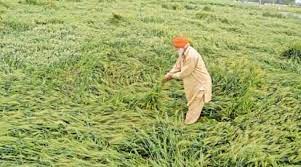
The Unified Portal for Agricultural Statistics (UPAg Portal ) was officially launched recently.
- This innovative platform is designed to revolutionize data management in India’s agriculture sector, addressing complex governance challenges.
- The portal aims to provide real-time, reliable, and standardized information, empowering stakeholders and facilitating more responsive and efficient agricultural policies.
- The UPAg Portal addresses key challenges in agriculture data, including lack of standardization, verification, dispersion, and different update frequencies.
- It offers data standardization, advanced analytics, granular production estimates, commodity profile reports, and flexibility for users to prepare their own reports.
- The UPAg Portal is part of the Digital Public Infrastructure for Agriculture, focusing on harnessing data for growth, transparency, and agility in India’s agriculture sector.
- This initiative aligns with e-governance principles and aims to enhance data-driven decision-making for policymakers, researchers, and stakeholders in the agriculture domain.
Amrit Brikshya Andolan : Assam Government

The Assam Government organized a campaign called “Amrit Brikshya Andolan” aimed at increasing the state’s green cover by planting saplings, primarily of commercial trees.
- The campaign set out to achieve nine world records during this massive tree-planting drive.
- The primary objective of the campaign was to plant one crore saplings across Assam, involving thousands of people from various regions of the state.
- Assam government intends to plant eight crore saplings in 2024 and an additional 10 crore saplings in 2025.
HungerMap LIVE: Global Insights And Key Trends
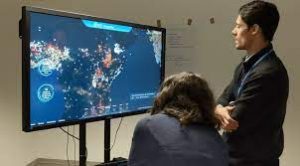
The World Food Programme has released “HungerMap LIVE: Global insights and key trends”.
- HungerMap LIVE is a real-time monitoring system tracking key indicators of acute hunger, including household food consumption, livelihoods, child nutritional status, mortality, and access to clean water.
Key findings of the Report:
- Global Food Insecurity and Hunger 828 million chronically hungry globally.
- 193 million experiencing acute hunger in 53 countries.
- Countries with a High Prevalence of Insufficient Food 12 countries account for 33% of the total number of people with insufficient food consumption
- Includes Somalia, Afghanistan, Syrian Arab Republic, Niger, Mali, Haiti, and more.
- Prevalence of Crisis or Above Crisis Level Coping Includes Haiti, the Syrian Arab Republic, Afghanistan, Yemen, and more.
- Prevalence of Challenges Accessing Markets Includes the Central African Republic, the Syrian Arab Republic, Namibia, and others.
India’s performance in hunger-related SDGs:
- In the 2021 Sustainable Development Report, India’s ranking slipped from 117 to 120 among 193 countries, placing it in the serious category of hunger.
- India also faces challenges related to zero hunger, health, well-being, safe drinking water, and gender equality among others.
- The Global Hunger Index (GHI) for 2022 ranked India 107 out of 121 countries, lagging behind Nigeria (103) and Pakistan (99).
Food Security and Malnutrition According to the State of Food Security and Nutrition in the World Report 2022, India is home to over 224 million undernourished people. - Despite initiatives like the Integrated Child Development Services (ICDS) program, the mid-day meal scheme since 1995, and the POSHAN Abhiyaan, India struggles with high rates of malnutrition.
- The global issue of hunger and food insecurity has shown an alarming increase since 2015, a trend exacerbated by a combination of factors including the pandemic, conflict, climate change, and deepening inequalities, which calls for attention.
International Coastal Clean-up (ICC) Day, 2023:

On 16 September 2023, the Indian Coast Guard (ICG) conducted International Coastal Clean-up (ICC) Day, 2023 across all Coastal States and UTs.
- Since 2006, the day has been held worldwide on the 3rd Saturday of September, annually, under the aegis of the UNEP and South Asia Co-operative Environment Programme (SACEP) (in South Asian Region).
- This year, Maharashtra witnessed the highest participation of volunteers followed by Tamil Nadu.
- The ICG was established in August 1978 by the Coast Guard Act, 1978 as an independent Armed force of India.
- The concept of forming ICG came into being after the 1971 war and the blueprint for a multidimensional Coast Guard was conceived by the visionary Rustamji Committee (1974).
- It is the 4th largest Coast Guard in the world and is headquartered in New Delhi.
- It functions under the Ministry of Defence.
Virtual Summit On The Voice Of The Global South:

The Prime Minister of India organised a virtual summit on the “Voice of the Global South”, involving approximately 125 countries.
- The objective of this summit was to solicit the opinions and input of countries from the Global South in order to determine the priorities for the region.
- The term “Global South” is often used to highlight the historical legacy of colonialism and the economic disparities between the formerly colonised nations and the developed Western nations.
- It underscores the challenges faced by these countries in achieving economic growth and development.
- In 1964, the Group of 77 (G-77) countries came into existence when they signed a Joint Declaration during the first session of the UN Conference on Trade and Development (UNCTAD) in Geneva.
- The G-77 became the largest intergovernmental organisation of developing countries at the time.
- It was created to promote the economic interests of developing countries and improve their ability to negotiate on international economic issues within the UN system.
- It now includes 134 countries across Asia, Africa, South America, the Caribbean and Oceania. China is not technically part of the group, hence, the grouping is often referred to as “G-77+China” in multilateral forums.
- The UN Office for South-South Cooperation (UNOSSC) was established in 1974.
- Its role is to coordinate cooperation between countries in the Global South and with developed countries or multilateral agencies, in collaboration with the G-77.
- The Global South, comprising countries with significant populations, recognises that they have the most at stake in shaping the future of the world.
- With three-fourths of the global population residing in these countries, they argue that they should have a proportionate and meaningful voice in global decision-making processes.
- Global South demands an equitable representation in global governance.
- The current model of global governance may not adequately reflect the demographic and economic realities of the world, and there is a call for change to ensure that the voices of the Global South are heard and considered.
Yashobhoomi:
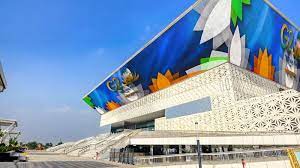
Prime Minister recently inaugurated the first phase of the India International Convention and Expo Centre (IICC), named Yashobhoomi, in New Delhi’s Dwarka.
- Yashobhoomi or India International Convention and Expo Centre (IICC) is a state-of-the-art modern convention centre located in Dwarka, New Delhi.
- It will be among the world’s largest MICE (Meetings, Incentives, Conferences and Exhibitions) destinations.
- It has a magnificent Convention Centre, multiple Exhibition halls and other facilities.
- The project covers a total area of over 8.9 lakh square metres with a total built-up area of more than 1.8 lakh square metres.
- The project is developed around a cost of Rs 5400 crores.
- The Convention Center, built across more than 73 thousand square metres of area, comprises 15 convention rooms, including the Main Auditorium, the Grand Ballroom and 13 meeting rooms with a total capacity of holding 11,000 delegates.
- It has the largest LED media facade in the country.
- The plenary hall in the Convention Center is equipped with a seating capacity of around 6,000 guests.
- The exhibition halls are built across over 1.07 lakh square metres of area suitable for hosting exhibitions, trade fairs and business events.
- It is equipped with a state-of-the-art wastewater treatment system boasting 100 per cent wastewater reuse and provisions of rainwater harvesting.
Sardar Sarovar Dam (SSD) : Massive Flooding

The recent release of massive amounts of water from the Sardar Sarovar Dam (SSD) has caused massive flooding in low-lying areas in the Narmada district.
- Sardar Sarovar Dam (SSD) is a concrete gravity dam built on the Narmada River at Kevadia in Gujarat’s Narmada district.
- The dam was named after Sardar Vallabhbhai Patel.
- Having a length of 1.2 km and a depth of 163 m, it is the third-highest concrete dam in India, the first two being Bhakra (226 metres) in Himachal Pradesh and Lakhwar (192 meters) in Uttar Pradesh.
- In terms of the volume of concrete involved in gravity dams, this dam will be ranked as the second largest in the world after the Grand Coulee Dam in the USA.
- It is a part of the Narmada Valley Project, a large hydraulic engineering project involving the construction of a series of large irrigation and hydroelectric multi-purpose dams on the Narmada River.
- The dam has two powerhouses – a canal head powerhouse and a river bed powerhouse with an installed capacity of 250 MW and 1,200 MW, respectively.
- The dam forms a vast reservoir known as the “Sardar Sarovar Reservoir” or “Narmada Lake,” which spans across several districts in Gujarat.
World Ozone Day 2023:

Ministry of Environment, Forest and Climate Change (MoEF&CC) recently celebrated the 29th World Ozone Day.
- World Ozone Day or International Day for the Preservation of the Ozone Layer, is observed annually on September 16.
- It is celebrated every year to spread awareness among people about the depletion of the Ozone Layer and the measures taken/ to be taken to preserve it.
- The theme for World Ozone Day 2023 is “Montreal Protocol: fixing the ozone layer and reducing climate change”.
- In 1994, the UN General Assembly proclaimed 16 September the International Day for the Preservation of the Ozone Layer, commemorating the date of the signing, in 1987, of the Montreal Protocol on substances that deplete the Ozone layer.
- The protocol was signed on September 16, 1987, in Montreal, Canada, to address the depletion of the ozone layer.
Montreal Protocol:
- It is an international treaty that aims to phase out the production and consumption of ozone-depleting substances, primarily chlorofluorocarbons (CFCs), halons, carbon tetrachloride, and other chemicals.
- These substances were commonly used in refrigeration, air conditioning, and aerosol propellants.
Kigali Agreement:
- It is an amendment to the Montreal Protocol.
- It was adopted on October 15, 2016, in Kigali, Rwanda, as an extension of the Montreal Protocol.
- While the original Montreal Protocol focused on phasing out ozone-depleting substances, the Kigali Amendment addresses the phase-down of Hydrofluorocarbons (HFCs), which are used as replacements for those ozone-depleting substances.
Tungareshwar Wildlife Sanctuary:
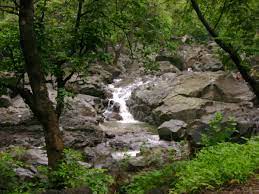
As part of the Surya Regional Water Supply Project, the work on the 4.6 km long underground tunnel for crossing the Tungareshwar Wildlife Sanctuary was recently completed.
- Tungareshwar Wildlife Sanctuary is located in the Palghar district of Maharashtra, 75 km away from Mumbai.
- It forms a corridor between Sanjay Gandhi National Park and Tansa Wildlife Sanctuary.
- It is characterised by hilly terrain, dense forests, and small rivers or streams.
- There are three different types of forests – Dry Deciduous, Moist Deciduous and Semi Evergreen.
- It is home to several species of trees, including teak, bamboo, and mango.
- Some commonly spotted animals in the sanctuary include Leopard, Wild Boar, Barking Deer, Langur, Bonnet and Rhesus Macaque, and Black-naped Hare.
- A multitude of birds, including the Crested Serpent-eagle, Jungle Owlet, White-eyed Buzzard, Oriental Honey-buzzard, Emerald Dove and Heart-spotted Woodpecker, can be found here.
- Several ancient temples are within its boundaries.
- The most famous of these temples is the Tungareshwar Temple, dedicated to Lord Shiva.
Santiniketan : Added To The UNESCO World Heritage Sites List
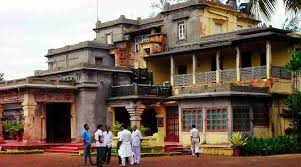
Santiniketan, the home of late Nobel laureate Rabindranath Tagore, has been added to the UNESCO World Heritage Sites list.
- Santiniketan is located in the state of West Bengal.
- It was established in 1901 by Rabindranath Tagore.
- It was a residential school and centre for art based on ancient Indian traditions.
- In 1921, a ‘world university’ was established at Santiniketan, later recognised as ‘Visva Bharati’.
- Visva-Bharati in Santiniketan is Bengal’s only central university whose chancellor is the Prime Minister.
- It is distinct from the prevailing British colonial architectural orientations of the early 20th century and of European modernism.
- It represents approaches toward pan-Asian modernity, drawing on ancient, medieval and folk traditions from across the region.
UNESCO World Heritage:
- A World Heritage Site (WHS) is a landmark or area with legal protection by an international convention administered by UNESCO under the UNESCO World Heritage Convention, established in 1972.
- These sites are designated by UNESCO for having cultural, historical, scientific or other forms of significance.
Red-Necked Phalarope : Spotted
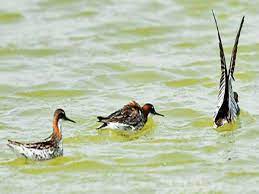
A group of birders who visited Kurichi Tank in Coimbatore spotted a Red-necked phalarope (Phalaropus lobatus).
- Red-necked phalarope is a fairly small shorebird known for spinning frantically on water to stir up small invertebrates.
- It has a circumpolar distribution and is found in both boreal and tundra zones between 60 and 70 degrees latitude.
- These phalaropes can be found in coastal regions of the Arctic Ocean, south to the Aleutians and Northwest to Britain.
- In the winter, it spends most of its time on the ocean.
- During this non-breeding season, phalaropes can be found off central-west South America, in the Arabian Sea and from central Indonesia to western Melanesia.
- The bird mainly feeds on small aquatic invertebrates and plankton.
- It exhibits a typical feeding behaviour of spinning on the surface of the water.
- During the breeding period, the species have chestnut-red plumage from behind the ear to the downsides of the neck.
- Females are observed to be polyandrous, that is, mating with more than one male.
- The males brood chicks and feed them.
- Conservation status
- IUCN: Least concern
Broadnose Sevengill Shark:
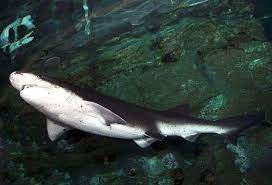
Ecologists are naturally concerned when record-setting rain this year altered the Broadnose Sevengill shark nursery grounds in San Francisco Bay.
- Broadnose Sevengill Shark is a large seven-gilled with a wide head and short, blunt snout shark.
- It is related to sharks that lived in the Jurassic Period about 300 million years ago.
- They prefer tropical, temperate, shallow waters
- It is found in all oceans except the North Atlantic and the Mediterranean Sea.
- In the eastern Pacific Ocean, they are found from southeastern Alaska to southern Baja California, Mexico and from Colombia to Chile.
- They can grow to a maximum length of 2.9 m. Females grow longer than their male counterparts.
- They feed on anything, such as other sharks, rays, chimaeras, bony fish, hagfish, dolphins and porpoise meat, seals, shark egg cases and sea snails.
- Conservation status:
- IUCN: Vulnerable




